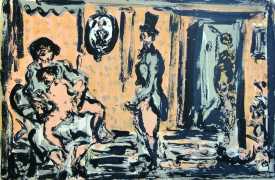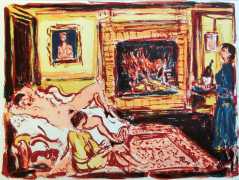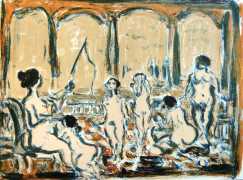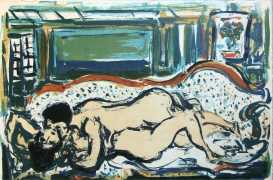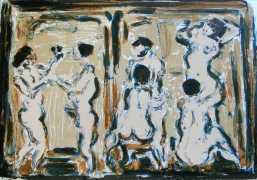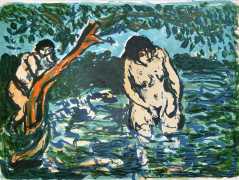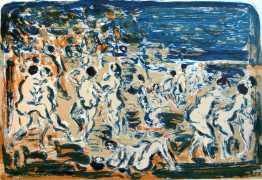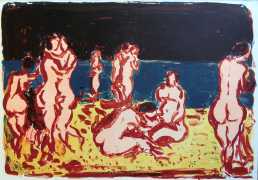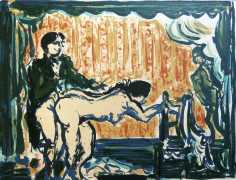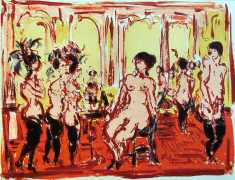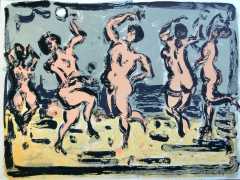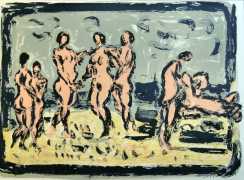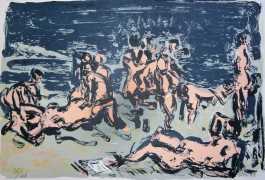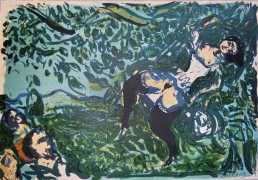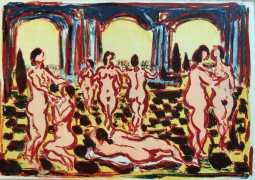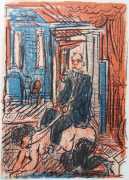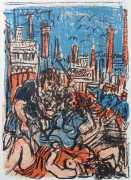This series of engravings, made when Cottavoz was living in Vallauris with his second wife Muriel and their young son Florent, is his most sexually explicit work. He was in his early fifties, and two years later he and Muriel separated; whether thoughts of sexual freedom had anything to do with the subject matter of Scènes de vie (Scenes of Life) can only be imagined.
One of Cottavoz’s closest friends was the writer and critic Frédéric Dard, who in the notes for a Cottavoz exhibition in 1971 wrote, ‘Any painting requires a certain distance of the beholder, as proximity destroys the faculties of perception. It is the collapse of reality examined too closely. But the works of Cottavoz escape this ruthless rule. Look at them at close range and you will continue to ascend the tormented slopes of his volcanic painting in three dimensions. His medium is molten lava, which like real lava takes a long time to dry, a sort of mineral tumult created by premeditated whims. I have admired Cottavoz since his first sketches, and followed his progress with more fervour than my own destiny. I live at “paintings by Cottavoz”. These are intense presences that calm me and stimulate me. At regular intervals I need to go into his den to check if the artist is true to the faith I hold him to. I return to his work as one returns to ones homeland, the heart embraced with a heady anguish, wondering if it might have changed. But it is even stronger, safer, and more developed than my previous visit. I slowly review his paintings. I contemplate them. I caress them. I listen to them. And I try to get them to love me.’
These lively images imagine orgies of sensuality – on the beach, in ballrooms, on the harbourside – all in Cottavoz’s trademark chaotic, joyful dance of colour.


